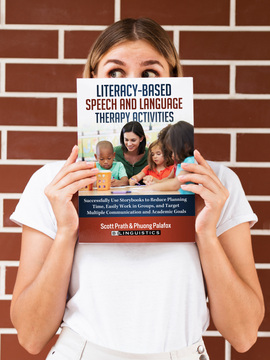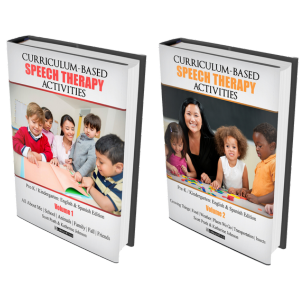Over 1200 SLPs Voted: The Best Speech Therapy Books By Goal Area
Thousands of SLPs weighed in to share their favorite speech therapy books and how and why they have come to rely on them to move children through their goals.
The Research is Clear as to Why Storybooks are So Powerful at Improving Communication Skills:
- Using speech therapy books provides an excellent way to keep students engaged while addressing their speech and language goals.
- Storybooks can be used with all ages and cultures.
- They can be used to address a wide range of goals, including articulation, semantics, syntax, comprehension, pragmatics, and discourse skills.
- Clinicians can work at different levels depending on the student’s needs.
- Students can generalize skills learned in storybook reading to other settings.
- Parents can easily become a part of the treatment process at home, which can greatly increase learning and retention of new skills.
- We can select books that are meaningful to and representative of each student.
But how do we quickly find the best speech therapy books that we can use with our children?
That’s where our community of thousands of SLPs come in. Yes, there are tons of great speech therapy books to choose from. But here are the primary books that professionals say are their “go to” or “favorite” books because of how powerfully they address a goal for different disorder classes or how engaging they are for different ages. We have organized them here based on goal type.

Speech Therapy Books for Language Goals
There are many benefits of using books to target language goals in speech therapy. Students are motivated by books and using books aligns speech therapy with the curriculum. Books may help with the generalization of skills, especially if the books used in speech therapy are the same books that the teachers are using in the classroom. Choosing the right speech therapy books provides students with a familiar context for learning about semantics and syntax. In an academic setting, so much of a student’s success is related to knowledge about the narrative.
Not all children have the same exposure and interaction with books in the home environment and narratives are not consistent across cultures. By using storybooks in speech therapy for language goals, SLPs can increase students’ exposure to the narrative directly or indirectly and promote academic success. Finally, books are convenient, inexpensive, and address themes that allow for related activities. Using books to address language goals in speech therapy can reduce planning and preparation time. Several language goals can be targeted at once using one book, which is great when working with groups of students.
Speech Therapy Books for Action Verbs
Books that include many action verbs are among the best books to read for speech and language therapy because kids get to be active participants. They can run, jump, and roar along with the characters on each page. SLPs love these books because they can work on vocabulary development as well as a variety of verb tenses. The books listed below are some of the best children’s speech therapy books because they contain a variety of familiar action verbs accompanied by illustrations. Consider looking at the illustrations and labeling the action verbs as a pre-reading activity. Present and present progressive tense verbs are easy to target while reading a story. Retelling a story is a great way to target past tense verbs.
Plot: This story follows a mischievous kitten throughout each day of the week.
Why we like it: Great book for preschoolers and describing actions on each page.
Cookie’s Week
Spanish: La Semana de Cookie

Go Diego Go! To the Rescue!/ ¡Al Rescate!
Plot: A bilingual (Spanish/English) board book with interactive, and voice output buttons.
Why we like it: It’s a great book for eliciting action words.
Go Diego Go! To the Rescue!/ ¡Al Rescate!

From Head to Toe
Plot: Animals provide examples of ways they can move and encourage children to imitate the movements.
Why we like it: This book is great for working on action words and labeling animals. This book can be interactive and there are many opportunities that allow for imitation of actions and gestures.
From Head to Toe
Spanish: De la cabeza a los pies

Knuffle Bunny
Plot: On an errand to the laundromat, Trixie loses her beloved stuffed bunny, and he gets into mischief left alone overnight.
Why we like it: Students identify with Trixie’s struggle to express herself. They can describe the different actions the bunny does. Good practice with /b/ in English. Good practice with /k/ in Spanish.
Knuffle Bunny
Spanish: El conejito Knuffle

Plot: When a mouse invites himself into the house and is given a cookie, a number of entertaining consequences ensue.
Why we like it: This book uses action words to describe the events of the mouse’s day. It’s a good way to introduce the concept of cause and effect and can be used for sequencing and predicting.
If You Give a Mouse a Cookie
Spanish: Si le das una galletita a un ratón

If You Give a Pig a Pancake
Plot: A pig is given a pancake leading to a chain of comical consequences.
Why we like it: Another great book for teaching action words, cause and effect, predictions, and sequencing in a humorous light.
If You Give a Pig a Pancake
Spanish: Si le das un panqueque a una cerdita

If You Give a Moose a Muffin
Plot: A surprise guest invites himself in and takes advantage of a boy’s hospitality in an entertaining way.
Why we like it: Many action words are included in this book. It’s also great for sequencing and making predictions, working on sentence building, and vocabulary.
If You Give a Moose a Muffin
Spanish: Si le das un panecillo a un alce

Snowmen at Night
Plot: Follow a town full of snowmen as they have a great time while we are asleep!
Why we like it: It is a hysterical adventure of activities that children can relate to (dancing, sledding, games) told with great pictures and very few words
Snowmen at Night

Froggy Gets Dressed
Plot: A frog goes to play in the snow, only to be reminded by his mother that he needs to put on more clothes each time he attempts to leave the house.
Why we like it: Funny story targeting action words, clothing, seasons, winter vocabulary, repeated sentence structure, and /r/.
Froggy Gets Dressed
Spanish: Froggy se viste

The Little Old Lady Who Wasn’t Afraid of Anything
Plot: The story of a lady who never gets scared, until one night she is followed by haunted clothes that form a scarecrow.
Why we like it: Many action words are included in the text. Repetitive “chorus.” Great for /s/ and /r/ clusters in Spanish, plurals in both Spanish and English, and naming clothing.
The Little Old Lady Who Wasn’t Afraid of Anything
Spanish: La viejecita que no le tenía miedo a nada

Speech Therapy Books for Describing
The following are great books to use in speech therapy for describing because they have rich imagery. Describing is an important skill to address in speech therapy because it supports a child’s ability to make connections and associations around the object they are describing. When working on describing, children can think about object categories, attributes, function, and location. This ultimately supports vocabulary development and word retrieval because lexical connections to that word/object have been created. Describing is also a great way to facilitate increased utterance length.
The Snowy Day
Plot: This is a young boy’s experience on a snowy day. Peter explores and enjoys the snow in many different ways.
Why we like it: Targets adjectives “slow” and “fast,” sequencing story events, /s/ blends
The Snowy Day
Spanish: Un día de nieve
Dear Zoo
Plot: A person requests help from the Zoo to find the perfect pet
Why we like it: A fun lift the flap story with a surprise ending. Children enjoy making predictions about what the perfect pet will be. Good for descriptions and labeling animals.
Dear Zoo
Spanish: Querido zoo

The Way I Feel
Plot: Children are able to recognize their emotions with colorful illustrations and examples in this book. They learn how to label these emotions and understand why someone might be feeling a certain way.
Why we like it: Books like this are great for speech therapy books for describing emotions and can be used for pragmatic language goals as well.
The Way I Feel
Spanish: Así me siento yo

Where Are You From?
Plot: A little girl gets asked where she is from by peers and adults. She starts to have questions about her own identity. Her grandfather helps her to find an answer.
Why we like it: This book provides some insight on a question that many of our students may have been asked at one point or another. It opens up conversations related to identity and multiculturalism, especially with older students.
Where Are You From?
Spanish: ¿De dónde eres?

A Chair for My Mother
Plot: A family must work together with their community to rebuild their home after a fire.
Why we like it: Plot, culture, great opportunities for visualizing and describing.
A Chair for My Mother
Spanish: Un sillón para mi mama

The Mixed-Up Chameleon
Plot: When a chameleon realizes it can change, it adds body parts and colors from many animals at once.
Why we like it: This is one of the greatest speech therapy books for 3-5-year-olds to work on body parts, colors, shapes, and comparing and contrasting. Not available in Spanish, but is easily translated.
The Mixed-Up Chameleon

Why Mosquitos Buzz in People’s Ears
Plot: A mosquito tells a lie to an iguana and sets off a series of events. It is a ‘fable-like’ story.
Why we like it: It teaches the value of telling the truth, and is great for visualizing, describing, and sequencing. Can learn different animals, cause and effect, and it has beautiful illustrations.
Why Mosquitos Buzz in People’s Ears
Spanish: Por qué zumban los mosquitos en los oídos de la gente

Where the Wild Things Are
Plot: A boy imagines himself traveling to a faraway place, makes unlikely friends, and learns to appreciate what he has at home when he returns.
Why we like it: Great for working on /r/ blends, describing, and past tense sentence structures. Can be used with many ages.
Where the Wild Things Are
Spanish: Dónde viven los monstrous

Speech Therapy Books for Following Directions
Following directions is an important receptive language skill. There is more than one way to use books in speech therapy to target following directions. Some books support this receptive language goal by explicitly giving directions and asking the reader to perform an action. Others have images that are easy to target with the instruction “Point to the __.” Either way, they support a child’s ability to process and retain auditory information by pairing an image with the directions. Practicing following instructions that were introduced in the reading as a follow-up activity without looking at the illustrations in the book provides an added challenge by decreasing visual cues.
Ten Black Dots
Plot: Simple illustrations with different configurations of dots that teach counting.
Why we like it: Teaches counting skills in a fun and imaginative way; invites fun arts and crafts follow-up activities to create different items/animals with black dots for language targets.
Ten Black Dots
Spanish: Diez puntos negros

Press Here
Plot: This book takes the reader through an interactive experience. Each page gives the reader a different instruction, which causes a dot to change, multiply, and grow. This book is highly engaging and encourages the reader to follow instructions to see what will happen next.
Why we like it: Great book for engaging the reader. This book helps with goals related to following instructions, cause and effect, and descriptions.
Press Here
Spanish: Presiona aquí

Elmo Says…
Plot: This book is based on the game Simon Says. The reader is asked to perform several actions throughout the book, but only when “Elmo says.”
Why we like it: This is one of the rare speech therapy books that is appropriate for all young children, including toddlers. There are several opportunities to practice following instructions and there are visual cues to help.
Elmo Says…

Speech Therapy Books for Naming
These are some of the best speech therapy books for toddlers because their clear, simple illustrations and text are perfect for naming. Young children are able to practice naming the items on the page without relying on the ability to read. The books below include opportunities to name items in several different categories such as days of the week, animals, body parts, colors, and foods. Naming items in related semantic categories helps with vocabulary development. Naming is an important skill because it helps create connections needed for word-finding, and requires retrieval of phonological and semantic information.
Brown Bear, Brown Bear, What Do You See?
Plot: The narrator asks different animals what they see. The response includes another animal of a different color.
Why we like it: This book is familiar to many students. It is good for labeling animals and colors. It also has predictable and repetitive text that allows students to participate in the reading. This book is great for younger students.
Brown Bear, Brown Bear, What Do You See?
Spanish: Oso pardo, oso pardo, ¿qué ves ahí?

Ten, Nine, Eight
Plot: A girl and her father count down to bedtime, teaching counting skills.
Why we like it: This is a simple bedtime story that teaches counting and labeling in the context of the nursery; invites interactions and opportunities to make tangible connections.
Ten, Nine, Eight
Spanish: Diez, Nueve, Ocho

Go Away, Big Green Monster!
Plot: While turning the pages of this die-cut book, a big green monster grows then disappears.
Why we like it: On each page, a new body part is introduced and described. Good for /r/ and /s/ in English and Spanish. It is best used for ages 3-5 years.
Go Away, Big Green Monster
Spanish: ¡Fuera de aquí, horrible monstruo verde!

Today Is Monday
Plot: Animals march across each page, eating a different food each day of the week.
Why we like it: Introduces animals, foods and days of the week for preschool aged children with a chant like verse. Great for language and phonology.
Today Is Monday

The Very Hungry Caterpillar
Plot: A caterpillar moves his way through the life cycle, eating everything in his path.
Why we like it: One of the best speech therapy books for teaching categories (food, colors), introducing the life cycle, comparing and contrasting, and presenting days of the week and numbers.
The Very Hungry Caterpillar
Spanish: La Oruga Muy Hambrienta

The Mitten
Plot: A boy’s grandmother makes his mittens. He goes for a walk and loses one in the snow. Various animals crawl into it, looking for a warm place to sleep.
Why we like it: Great for sequencing, naming animals, winter vocabulary, and discussing responsibility.
The Mitten
Spanish: El mitón

There Was an Old Lady Who Swallowed a Fly
Plot: An old lady swallows one animal after another to catch the preceding one.
Why we like it: Good story for targeting animal vocabulary, colors, sequencing, and /s/ and /l/ clusters (English) and /r/ clusters (Spanish). Although written in English, this story is easily translated into Spanish.
There Was an Old Lady Who Swallowed a Fly

Speech Therapy Books for Sequencing
Sequencing is an important skill for narrative language development. Sequencing gives a child a structure to learn how to tell stories and past events. Children learn to include the details of a story or event in the correct order to facilitate listener understanding when working on sequencing goals in speech therapy. Many sequencing stories include familiar themes such as days of the week or numbers, which helps when retelling events in the correct order. Sequencing also facilitates making predictions because a child is able to predict what happens next when the story follows a familiar sequence. The following books all have a clear beginning, middle, and end that make them well-suited to work on sequencing in speech therapy.
The Hat
Plot: A girl airs out her wool clothes in the sun. Her stocking falls and the hedgehog ends up wearing it on his head. All the other animals come by and laugh at him.
Why we like it: Practicing /r, s, l/, descriptions, and learning new vocabulary (winter, animals).
The Hat
Spanish: El gorro de lana

The Rooster Who Went to His Uncle’s Wedding
Plot: A Cuban folktale about a rooster who is trying to get clean on the way to his uncle’s wedding and encounters humorous setbacks.
Why we like it: Great for children aged 5-7, and can be used to teach animals, compare and contrast, teach ‘if’…’then’ and consequences of actions.
The Rooster Who Went to His Uncle’s Wedding
Spanish: El gallo que fue a la boda de su tío

Stuck
Plot: When a little boy tries to rescue his kite from a tree, he throws item upon item trying to get it down, resulting in everything getting stuck!
Why we like it: Amusing story- kids will laugh out loud. Great for teaching predictions, sequencing, /r/ clusters, and teaching expectations.
Stuck
Spanish: Atrapados

The Cazuela That the Farm Maiden Stirred
Plot: The story of how a maiden and farm animals work together to make the rice pudding for the fiesta.
Why we like it: Good for sequencing, teaching animal names/categories, and beautiful illustrations for describing. The story is told in English with Spanish words incorporated.
The Cazuela That the Farm Maiden Stirred

Ten Little Rubber Ducks
Plot: 10 rubber ducks are swept overboard off a cargo ship and travel to different parts of the world.
Why we like it: This is a great speech therapy book for teaching counting, colors, sequencing, and part-whole relationships.
Ten Little Rubber Ducks
Spanish: Diez patitos de goma

The Napping House
Plot: A granny is dozing in her cozy bed when a sleepy child crawls on top and starts dreaming. One by one, animals pile up and join in the nap. Finally, a wakeful flea interrupts their slumber, which topples the pile of sleepers.
Why we like it: This book is great for labeling, describing, and sequencing. It also allows for a discussion about cause and effect.
The Napping House
Spanish: La casa adormecida

The Gingerbread Man
Plot: A couple makes a child out of gingerbread. He comes to life and escapes them.
Why we like it: Kids love chanting along to the rhythm of the story. Action words, sentence building, and Spanish /r/ and /r/ blends.
The Gingerbread Man
Spanish: El Hombre de Pan de Jengibre

The Grouchy Ladybug
Plot: The story of a ladybug who picks fights with animals much larger than herself.
Why we like it: Language targets include: concepts of time, increasing sizes, cycle of day to night, and also great for teaching cooperation and expected/unexpected behaviors.
The Grouchy Ladybug
Spanish: La Mariquita Malhumorada

The Rainbow Fish
Plot: A proud fish learns a lesson about valuing inner beauty and friendship.
Why we like it: Lovely illustrations, a fairly predictable story that is good for vocabulary building, semantic mapping, and teaching predictions and inferencing. Great story for working on social/pragmatic skills (friendship building/initiating play).
The Rainbow Fish
Spanish: El pez arcoiris

Speech Therapy Books for WH Questions
Repetition is important for little ones with language delays because we know that they need to hear a word or sentence many times for it to be understood and used correctly. Repetitive books for speech therapy also encourage participation as the child has multiple opportunities to respond to a question with a similar answer. The following books rely on repetition and are predictable, making them an excellent resource for addressing wh questions.
Are You My Mother?
Plot: A baby bird goes in search of his mother who has gone to look for something for him to eat.
Why we like it: With simple words and illustrations, this humorous book can be used to target vocabulary, interrogatives, and prediction making.
Are You My Mother?
Spanish: ¿Eres mi mama?

Creepy Carrots
Plot: Jasper the Rabbit loves eating the carrots that grow in Crackenhooper Field. Every time he passes by he stops and grabs carrots, until one day the carrots start following him.
Why we like it: Lots of fun pictures and an interesting narrative. It encourages readers to make predictions and there are many opportunities for asking WH questions.
Creepy Carrots
Spanish: Las zanahorias maléficas

I Went Walking
Plot: A little boy goes for a walk and greets a series of animals on the way.
Why we like it: It is one the classic speech therapy books that is great for practicing first-person statements, past tense, animals, and simple sentence structure.
I Went Walking
Spanish: Salí de paseo

The Gigantic Turnip
Plot: A farmer and his wife find a giant turnip in their garden that requires cooperation from all the animals on the farm to unroot.
Why we like it: Great story for working on wh- questions, /r/ clusters (Spanish), seasons, and vegetable/planting vocabulary.
The Gigantic Turnip
Spanish: El nabo gigante

Those Shoes
Plot: Jeremy wants a pair of those shoes, the ones everyone seems to be wearing. His grandma says they don’t have room for “wants”.
Why we love it: It teaches students about culture, friendship, and the ins and outs of life.
Those Shoes
Spanish: Esos zapatos

The Very Busy Spider
Plot: A spider busy spinning her web cannot be persuaded by other farm animals to leave her work.
Why we like it: Lots of action words and can be used to practice labeling farm animals.
The Very Busy Spider
Spanish: La araña muy ocupada

Whose Mouse Are You?
Plot: A mouse is looking for his family and receives a delightful surprise at the end of the story.
Why we like it: The author’s use of rhyming in English and Spanish makes it great for targeting articulation and phonological skills for preschool-aged children.
Whose Mouse Are You?
Spanish: ¿De quien eres, ratoncito?

Polar Bear, Polar Bear, What Do You Hear?
Plot: Another story in a similar format to Brown Bear, each animal introduces the consecutive animal and the sound it makes.
Why we like it: Similar to it’s predecessor, it is helpful for working on expanding vocabulary, action words and first person utterances.
Polar Bear, Polar Bear, What Do You Hear?
Spanish: Oso polar, oso polar, ¿que es ese ruido?

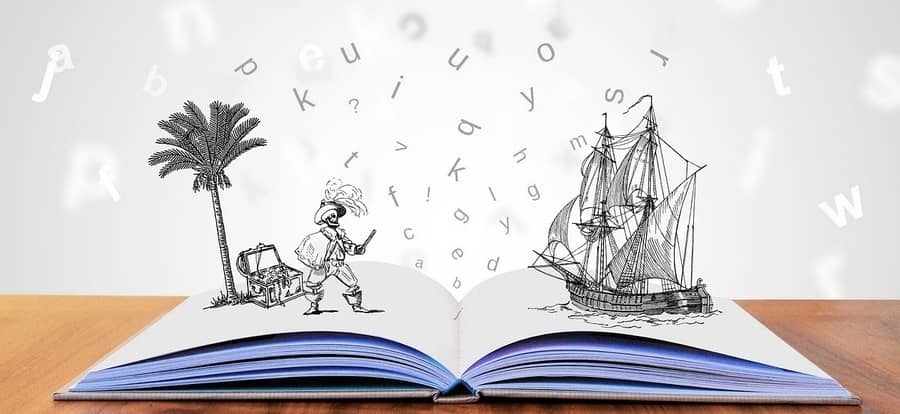
Speech Therapy Books Targeting Articulation
The best speech therapy books to use for articulation have repeated phonemes and often include alliteration. These books provide children the opportunity to listen for and identify target sounds, which is an important skill when working on those sounds in speech therapy. Words that are chosen as therapy targets from books are meaningful practice for students because they will likely see these words again. The words are in a context that children are familiar with and using books may help with the generalization of articulation skills in the classroom.
Books provide opportunities for addressing different skill levels. For example, using books in speech therapy lets your move up and down a scale of difficulty between sounds at the word, sentence, paragraph, or conversation level. Using books to target articulation is also ideal because it ties speech therapy to the curriculum.
Speech Therapy Books for Articulation in English
Speech Therapy Books for S Sounds
Silly Sally
Plot: Silly Sally has a unique way of getting around. This story is a cumulative rhyme about her trip to town and all of the animals that she meets along the way.
Why we like it: This book can be used for targeting speech and language goals. Some possible language goals include naming animals and action words.
Silly Sally

Sid and Sam
Plot: Two friends, Sid and Sam, sing in different ways together until Sam wants to stop and Sid keeps singing.
Why we like it: several opportunities to practice /s/ sounds with the use of alliteration in the text
Sid and Sam

Silly Tilly
Plot: Silly Tilly is a duck who likes to entertain the other farm animals with her silly actions. Although the other animals do not appreciate her antics at first, they realize that Silly Tilly makes the farm a happy place.
Why we like it: Children can enjoy reading about the silly things that Silly Tilly does
Silly Tilly

Speech Therapy Books for S Clusters
“Stand Back,” Said the Elephant, “I’m Going to Sneeze!”
Plot: The other animals are in distress when the elephant needs to sneeze. Last time, the elephant’s sneeze left the animals in disarray.
Why we like it: Appropriate for older children. This story provides examples of descriptive words and is also good for working on vocabulary.
“Stand Back,” Said the Elephant, “I’m Going to Sneeze!”

The Itsy Bitsy Spider
Plot: This book expands on the familiar song about the itsy bitsy spider. Not only does the spider climb up the water spout, but it also climbs into the kitchen and through the house.
Why we like it: Children’s familiarity with the song allows them to participate in the reading.
The Itsy Bitsy Spider

Some Smug Slug
Plot: This story tells about a slug that climbs up a challenging slippery slope. Several different creatures in the garden try to stop him from climbing. But why?
Why we like it: Several opportunities to practice a variety of s-clusters. Also, there’s a surprise ending.
Some Smug Slug

Stick and Stone
Plot: Stick and Stone are alone until Stick defends Stone from Pinecone and they become best friends.
Why we like it: Simple story that provides the opportunity to discuss friendship and kindness
Stick and Stone

Speech Therapy Books for L Sounds
Little Blue and Little Yellow
Plot: Little Blue and Little Yellow are best friends. One day, they hug each other and turn green. Upon returning home, they find that their families no longer recognize them.
Why we like it: This story explores concepts such as differences, tolerance, and friendship in a unique way.
Little Blue and Little Yellow

Lola at the Library
Plot: Lola and her mother go to the library. Lola enjoys activities at the library and picking out her books. She especially enjoys reading the books when she gets home.
Why we like it: Discusses the routine of going to the library. Appropriate for younger children.
Lola at the Library

Lion Lessons
Plot: A boy wants to be a lion. He takes lessons and learns that being a lion is not as easy as he thought it would be. Then he learns the most important lesson, looking out for your friends.
Why we like it: The reader is tempted to try practicing their lion skills along with the book. This book is also great for action words.
Lion Lessons

Speech Therapy Books for L Clusters
Flip, Float, Fly
Plot: A nonfiction book that talks about how seeds move and eventually end up in the place they will grow.
Why we like it: One of few nonfiction books on the list. It is fun to compare different types of seeds in the book. This book allows for a variety of activities including bringing seeds into the lesson. In addition to multiple L- clusters, there are several action words also in this book.
Flip, Float, Fly

The Little Airplane
Plot: Pilot Small has an adventure in his little airplane.
Why we like it: Simple plot that is great for young airplane lovers.
The Little Airplane

Speech Therapy Books for R Sounds
The Little Mouse, the Red Ripe Strawberry & the Big Hungry Bear
Plot: A little mouse picks a red ripe strawberry. The big hungry bear can smell the strawberry from a mile away and the little mouse needs to hide it quickly.
Why we like it: The text allows for R to be targeted in all word positions.
The Little Mouse, the Red Ripe Strawberry & the Big Hungry Bear

Ribbit Rabbit Robot
Plot: A rabbit, robot, and frog find a magic lamp. A genie appears and gives a warning, but the rabbit and robot do not heed the warning when making their wishes.
Why we like it: Lots of opportunities to practice initial R. With simple text, the pictures help tell the story and the book can be used for picture description tasks as well.
Ribbit Rabbit Robot

The Little Mouse, the Red Ripe Strawberry & the Big Hungry Bear
Plot: A little mouse picks a red ripe strawberry. The big hungry bear can smell the strawberry from a mile away and the little mouse needs to hide it quickly.
Why we like it: The text allows for R to be targeted in all word positions.
The Little Mouse, the Red Ripe Strawberry & the Big Hungry Bear

Speech Therapy Books for R Clusters
Little Red and the Very Hungry Lion
Plot: This book is a twist on the classic Little Red Riding Hood story. Little Red meets a hungry lion on the way to visit her Auntie Rosie. Little Red outsmarts the lion and causes him to change his ways.
Why we like it: Amusing storyline. There are lots of words including R and R-clusters in the texts. This book is great for targeting language goals as well.
Little Red and the Very Hungry Lion

Five Green and Speckled Frogs
Plot: This book is a retelling of the classic nursery rhyme. The story starts with five frogs on a log and counts down as each frog jumps into the pool.
Why we like it: Predictable and familiar text.
Five Green and Speckled Frogs

Speech Therapy Books for Articulation in Spanish
Spanish Speech Therapy Books for S Sounds
El pez pucheros
Plot: A fish has a persistent frown. He meets several sea creatures that try to convince him to change his expression, but nothing works. One day he meets a special fish who shows him his lips are meant for something other than pouting.
Why we like it: There are several opportunities to practice /s/ in all word positions in this book. There is also an English version called The Pout-Pout Fish.
El pez pucheros

¿No Te Sientes Bien, Sam?
Plot: Sam the bear doesn’t feel well. His mother tries to give him medicine, but he does not like the way it tastes. His mother finds a way to make Sam feel better. They spend quiet time together watching the snow fall.
Why we like it: Simple plot that includes a topic that many children can relate to. Opportunities to practice /s/. There is an English version as well.
¿No Te Sientes Bien, Sam?

¿Quieres ser mi amigo?
Plot: Lola bunny and Simon dog are neighbors who never speak. They do not take the time to get to know one another until they both see a falling star.
Why we like it: Nice plot that lends itself to conversations about friendship and empathy. The English version is “On the Night of the Shooting Star.”
¿Quieres ser mi amigo?

Spanish Speech Therapy Books for R Sounds
Evelyn del Rey se muda
Plot: An award-winning story about two best friends who spend every moment together, until one of them has to move away.
Why we like it: This book has several opportunities to practice R in Spanish. There is also an English version available.
Evelyn del Rey se muda

Oso no para de roncar
Plot: A bear is asleep in his cave on a cold winter night. Different animals arrive to take shelter from a snow storm and start a party in the bear’s cave. The bear is upset when he wakes to find the other animals there.
Why we like it: This story has several opportunities to practice R in Spanish. It is also appropriate for targeting language goals such as labeling, describing, and sequencing.
Oso no para de roncar

¡Me rompí la trompa!
Plot: Elephant tells his friend Piggie the crazy story behind his broken trunk.
Why we like it: This is a short, funny story that all ages can enjoy. This book has opportunities to practice R clusters in Spanish
¡Me rompí la trompa!

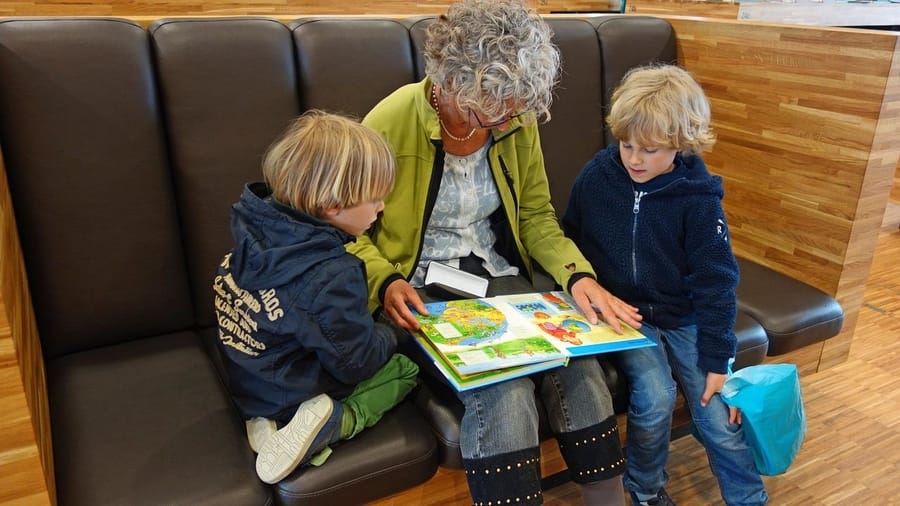
Speech Therapy Books That Target Fluency Disorders
Many times students with fluency disorders have not ever met another person who stutters. Being able to connect with another person who experiences some of the same challenges that they do is helpful in building a positive attitude about their own communication. Although SLPs may not have more than one student who stutters at a time on their caseload, they can present the perspective of another person who stutters through specific speech therapy books that have been written by people who stutter. These books allow students to connect with the author as another person who stutters and identify with some of the challenges the author describes.
Using books in fluency therapy provides opportunities to discuss self-perception as it allows for students to have conversations about their feelings about their own disfluencies. Fluency strategies can also be targeted during the reading or as part of a story retell.
Our 3 Favorite Fluency Disorder Speech Therapy Books
I Talk Like a River
Plot: A boy becomes discouraged when his stutter impacts his communication in school. His father encourages him by comparing his son’s speech to the river they both love.
Why we like it: This book promotes discussion about different types of stuttering and the variability of a stutter.
I Talk Like a River

When Oliver Speaks
Plot: Oliver is a boy who stutters. When it is his turn to present a project in front of the class, he does his best to avoid it. With the help of his mother, Oliver learns to accept his stutter and is prepared to present to the class.
Why we like it: This book was written by a boy who stutters with the help of his mother. This book can lead to conversations about feelings related to a stutter and self-disclosure.
When Oliver Speaks

A Boy and A Jaguar
Plot: This book is a memoir written by Dr. Alan Rabinowitz about his experiences as a person who stutters. When Alan was young, his stutter was so severe that he had difficulty communicating. However, when speaking with animals, he was fluent. Alan dreamed of being able to use his voice to help animals.
Why we like it: This book is appropriate for older children as it raises issues related to wildlife conservation. Dr. Alan Rabinowiz was a renowned conservationist and a person who stuttered.
A Boy and A Jaguar

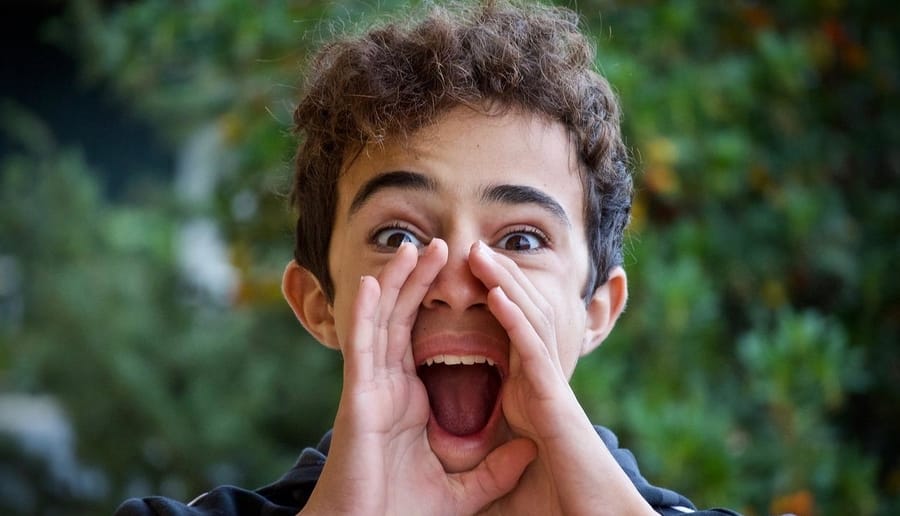
Speech Therapy Books Targeting Voice Disorders
Voice therapy can involve concepts such as resonance, pitch, and vocal hygiene that are unfamiliar to most children. Using books as part of voice therapy can help provide examples and imagery of these concepts. Books also introduce vocabulary related to vocal habits and voice in a way that children can understand with pictures that accompany the story.
Books help students understand the different ways voices can be used and help them recognize how they use their own voices. Students benefit from the examples provided in books that detail how voices can be adjusted and when they should be adjusted depending on the situation. A critical component of voice therapy is understanding complicated concepts that can be explained in a familiar context by incorporating books into treatment.
Our 2 Favorite Voice Disorder Speech Therapy Books
Decibella
Plot: Decibella has earned her nickname because of her loud voice. Her teacher shows her that she can adjust the volume of her voice depending on the situation.
Why we like it: Good for discussing vocal volume as part of voice therapy. Children have the opportunity to practice each type of voice.
Decibella

Voices Are Not for Yelling (ages 4-7)
Plot: This book discusses indoor and outdoor voices and when to use each.
Why we like it: This book can also be used to help with teaching children to use their words to resolve conflicts.
Voices Are Not for Yelling (ages 4-7)
Spanish: La voz no es para gritar

Related links: How to Read Books with Children with Language Delay – ASHA.org


